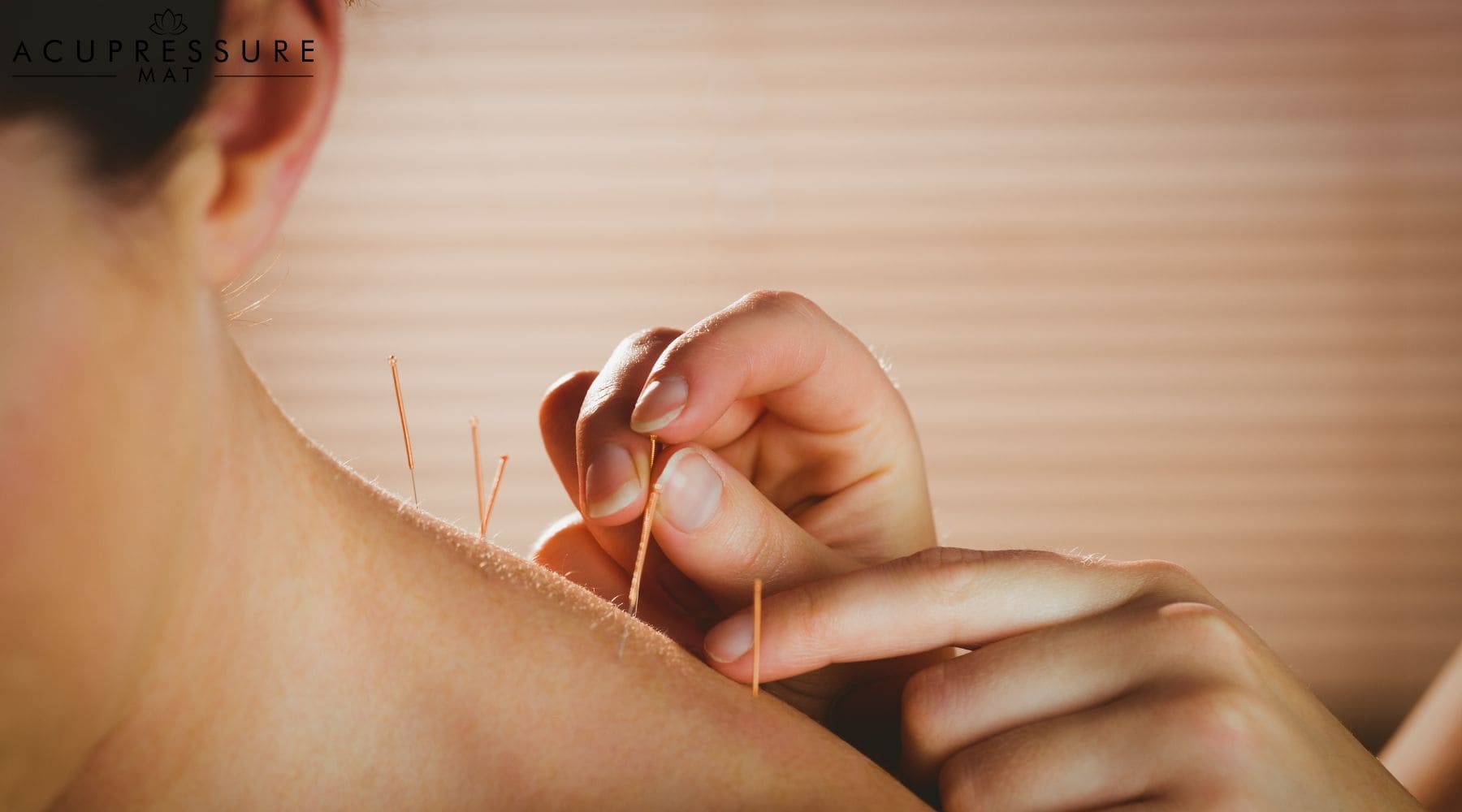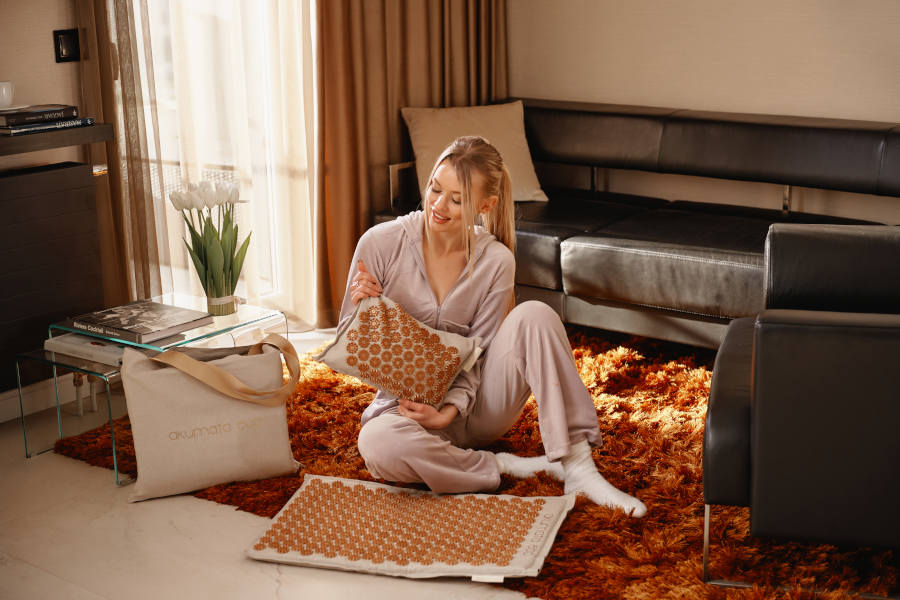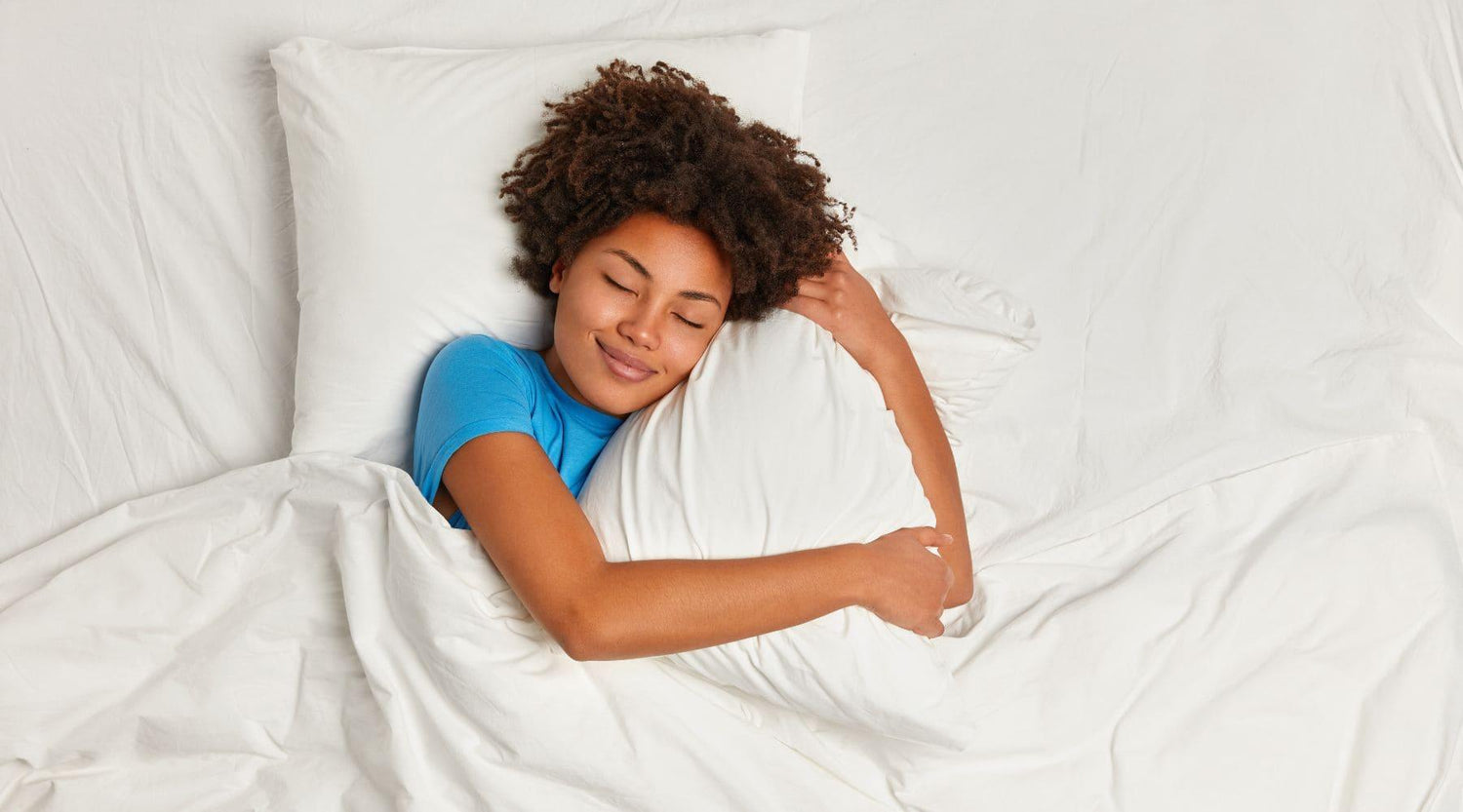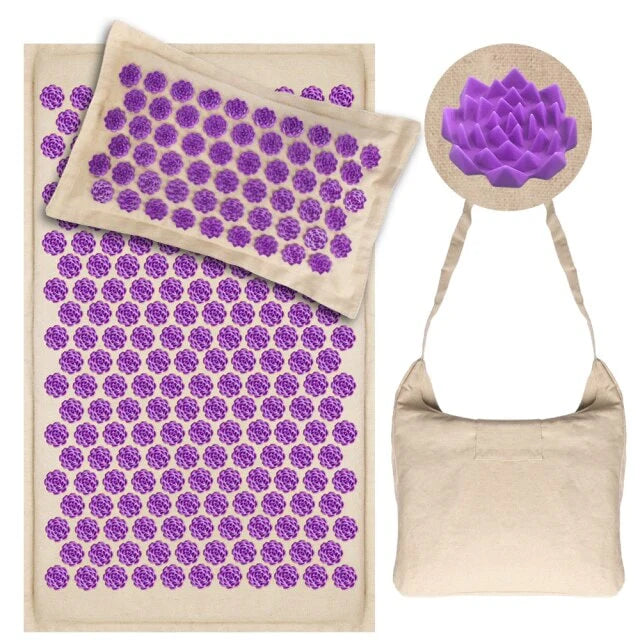Do you frequently have problems falling asleep? Your sleeplessness issues might be resolved by acupressure.
There are acupressure points to assist you fall asleep in addition to using an acupuncture pad, which is excellent for easing back pain (and other types of discomfort) and providing you with relief and relaxation.
Acupressure therapy promotes relaxation and aids in the even distribution of energy throughout the body.
By applying pressure to particular body parts, you can reduce tension, worry, phobias, and discomfort while also improving the quality of your sleep.

Which points to press for better sleep?
The B38 acupressure point
One of the most crucial acupressure and acupuncture pressure sites for treating sleep disorders and encouraging peaceful sleep is the B38 point, also known as the "Vital Diaphragm."
This point is situated in the back, between the shoulder blade and the spine, at the level of the heart. The stimulation of this point aids in reducing sleep-interfering tension, worry, grief, and dread.
In addition, it helps with certain allergies, respiratory issues, and coughing. Lay on the floor with two tennis balls side by side, with the balls in the space between your shoulder blades. For one minute, close your eyes and take deep breaths.

The P6 acupressure point
The well-known acupressure point P6, also known as pericardium 6, is used to cure nausea and vomiting. The center of the inner forearm, 1.5 cm from the wrist crease, is where this point known as the inner door pointis situated.
The reduction of anxiety, stomach issues, and heart palpitations makes it one of the most effective acupressure locations for inducing sleep.
This idea is also helpful for treating recurrent infections brought on by a compromised immune system, chest congestion, heart pain, sadness, nausea, and dizziness.
It can be triggered by pushing strongly on the spot with the right thumb on the inside of the left wrist for a minute, then applying pressure with the opposite hand.

The H7 acupressure point
The H7, also known as the Heart 7, is frequently used in acupressure to treat sleep issues. This point is situated parallel to the little finger, on the inside of the wrist crease.
This point is stimulated to help with sleeplessness brought on by nervousness, emotional issues, anxiety, and cold sweats. Additionally, it calms agitation, palpitations, chest discomfort, epilepsy, and heart pain.
This point can be stimulated by placing the thumb of the right hand on the left hand's wrist crease, pressing down for a minute, and then swapping hands.

The B10 acupressure point
An acupressure point called the B10, also known as the bladder 10, is used to cure headaches, neck pain, and vertigo. On the muscles on the outside of the spine, near the back of the neck, is where this point is situated.
One of the most significant acupuncture and acupressure points for sleep, as well. It helps you unwind and calm your mind while relieving tension, sleeplessness, and weariness.
In addition, it helps with skin issues, sore throats, nasal congestion, back pain, and shoulder and back discomfort.
Curl your fingers and place them on the strong neck muscles to stimulate this region. While taking deep breaths, exert firm pressure on the muscles for one minute.

The GV16 acupressure point
Another crucial pressure point utilized in the therapy of sleep disorders is the GV16 Acupressure Point, also known as Governor Vessel 16.
It is situated in the middle of the back of the head, in a sizable hollow under the base of the skull, and is known as the "mansion in the wind." Insomnia and sleep difficulties brought on by mental tension, palpitations, fear, fright, mania, and suicidal thoughts are alleviated by focusing on this point.
Additionally, it relieves asthma, chest tightness, earaches, headaches, throat swelling, eye problems, nosebleeds, and spinal cord issues.
Place your middle fingers in the depression in the center of the base of the skull to activate this point. Keeping your eyes closed and inhaling deeply, tilt your head back and press firmly into this hollow for one minute.

The GB20 acupressure point
The GB20, or Gall Bladder 20, is a popular acupressure point for treating sleep issues as well as migraines, headaches, blurred vision, low energy, exhaustion, and cold and flu symptoms.
This location, which is also known as the "Gateway to Consciousness," is situated between the two vertical neck muscles, just below the base of the skull.
The thumbs should be used to stimulate this point. Keeping the eyes closed and tilting the head back, press the thumbs progressively and firmly under the base of the skull for one minute. The points will feel like they have a constant pulse.

The GV24.5 acupressure point
The Governor's Vessel 24.5, also known as GV24.5, is one of the greatest acupressure sites for the treatment of sleep apnoea because it promotes peaceful sleep by calming the mind and clearing the thoughts.
The area between the brows where the bridge of the nose curves into the forehead is known as the "third eye." The central nervous system is relaxed as a result of this point, which also helps to ease anxiety, panic attacks, fear, depression, and sleeplessness.
Additionally, it aids in the treatment of jaw and tooth pain, vertigo, and epilepsy. This point has to be stimulated along with CV17, another acupressure point.
The fingertips of your left hand should be placed on CV17, which is situated in the sternum's indentations at the level of the heart.
Place the tip of your right middle finger between your eyebrows. Apply pressure for a full minute while closing your eyes and taking deep breaths.

How does acupressure work for sleep?
People who have trouble falling asleep are increasingly likely to consult acupuncturists to alter their daily routine. But it is only normal to wonder what an acupuncture session is like before making the commitment.
Additionally, you can notice from this additional piece that there are a lot of inquiries that can be made regarding acupuncture and sleep. The duration of the acupuncture sessions will be covered in this article.
Naturally, as you might anticipate, your acupuncturist's sessions with you will vary according on your needs.
However, depending on your specific needs, acupuncture sessions are typically carried out on your back, stomach, or side. Your acupuncturist will begin by asking you a series of questions to ascertain your needs.
These will enable him or her to comprehend the approach they will take to address your sleeping issues better.
He will also be able to provide you advice on the amount and frequency of sessions, depending on your particular situation. In fact, the conditions can vary greatly from patient to patient.

Acupressure mat for better sleep
The acupuncture mat, often referred to as an acupressure mat or a flower field mat, has a lot of pins that, when the body weight is applied to them, push on the body's acupressure points on the back.
You can reduce pressure and untie nerve knots to relax by lying on the acupuncture mat for about 10 minutes before going to bed.
Even better: your time on the acupuncture mat will be integrated into a "sleep ritualization," which will encourage your brain to let go and hasten the process of falling asleep.
For instance, this ritualization will involve gradually lowering the room's brightness, turning off the screens, and doing any other steps that are likely to encourage relaxation.








